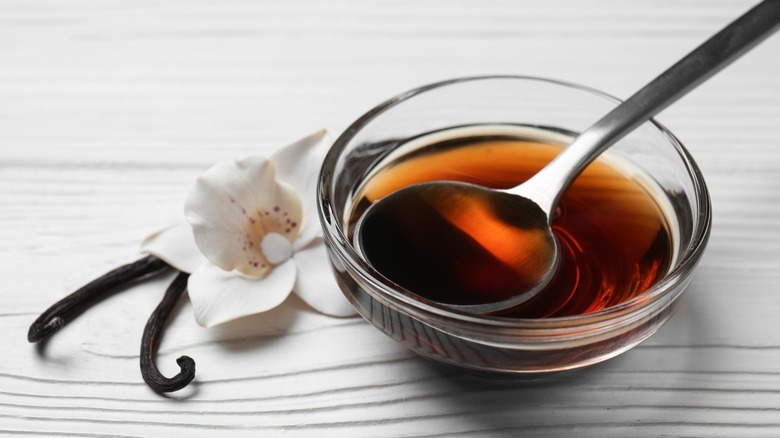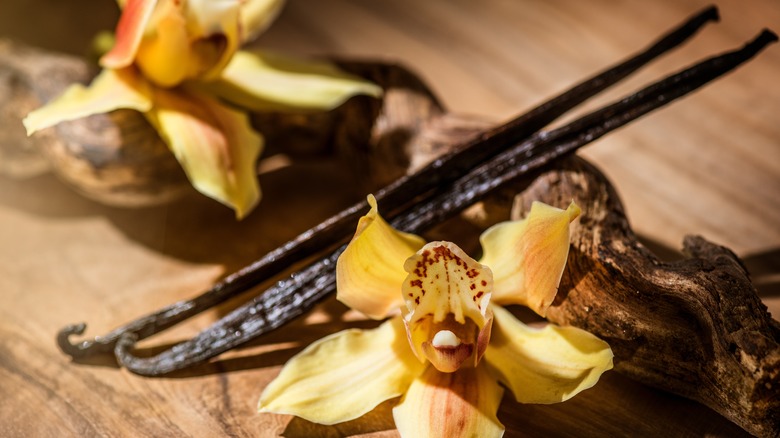What Led To Vanilla's Underwhelming Reputation?
If you've ever been called "vanilla" you're likely familiar with its less-than-enthusiastic connotation. Somewhere through the years, complex flavorful vanilla beans became synonymous with bland and boring. This shift is likely because vanilla became so popular and familiar, and remained so difficult to procure, that artificial versions took over the market.
Thomas Jefferson was the president who introduced real vanilla to the U.S. in the late 1700s after tasting it in France. He brought 50 vanilla bean pods to America and had his French-trained chef use the vanilla beans to flavor ice cream. At the time, vanilla was new and exotic with a fragrant sweetness. However, up until that point, ice cream flavors were extravagant in texture and contained everything from fruits and nuts to parmesan and oysters. Therefore, the simplicity of vanilla ice cream made it seem plain, and as the base to which other flavors could be added, which is true to this day.
For centuries vanilla was highly coveted and valuable and was seen as almost magical, with some considering it an aphrodisiac. Over the years, however, with the oversaturation of the vanilla essence in everything from grocery items to skin and hair care products, a shift occurred in consumers, and vanilla wasn't savored: an occurrence that coincided with the production of artificial vanilla flavoring. In reality, pure vanilla is a complex, powerful, and unmistakable flavor, but the artificial version is less potent and more prevalent, obscuring the true nature of the flavoring.
Real vanilla is not underwhelming
While vanilla may have garnered an underwhelming reputation over the years, it's actually due to the rarity of the spice itself. Vanillin is the chemical compound in vanilla that provides that familiar smell and taste. The vast majority of vanillin, 99%, is artificially produced. This is primarily because the vanilla plant is difficult to grow naturally.
Vanilla is mainly grown in Madagascar, as well as Mexico, Indonesia, and Tahiti. The laborious process of cultivating real vanilla has resulted in it becoming extremely expensive. The orchid flowers take years to produce the vanilla beans, then they have to be hand-pollinated. Additionally, each flower is only in bloom for one day out of the year, leaving mere hours for the manual pollination to occur. It was the high demand for this spice and these difficult growing conditions that led to the manufactured vanilla flavor in the first place.
In reality, pure vanilla is a rich and complicated flavor with hints of spice and a delicate balance of earthy depth and soft, floral aromatics. Toasted wood notes with a sweet finish help to create vanilla's unique flavor profile. Plus, each vanilla bean will taste slightly different based on where it was grown, with Madagascan vanilla providing a familiar richness and Tahitian vanilla often being described as luxurious, with a sensual, relaxing smell that's still seen as an aphrodisiac. True vanilla is a rare and wonderful thing, so next time somebody describes you as "vanilla," say "thank you."

